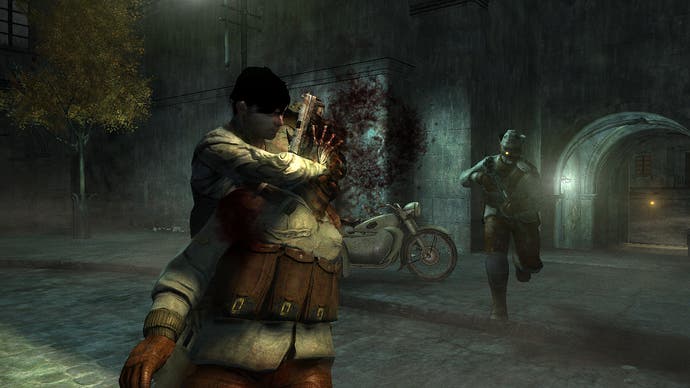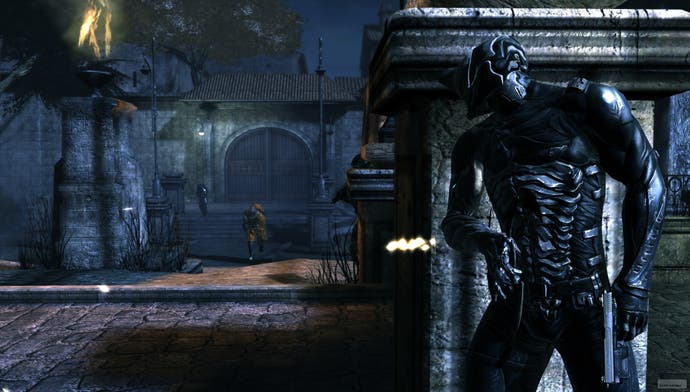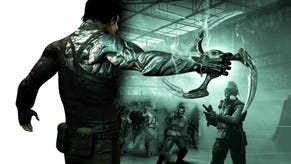Dark Sector
Glaive consequences.
Comparisons to Gears of War feel embarrassingly obvious but are completely justified. Indeed, it often feels like Dark Sector is openly inviting such a criticism. From the shattered gothic scenery, to Hayden's crouched run, to the vault-and-roll cover moves, there are simply too many elements here that feel exactly the same as Epic's hit to be chalked up to coincidence or genre convention.
Gears may not have invented this style of play, but it's the current benchmark and this over-familiarity leaves the proceedings with a distinctly opportunistic feel. It's the Single White Female of third-person duck-and-cover action games.
There are only three types of enemy in the game, none of which pose any sort of challenge except to your patience. Human enemies will shoot and throw grenades, and occasionally break cover and mill about aimlessly in a way that could pass for AI if you were feeling generous.
Then there are the infected, mutated humans who could have stepped out of any Resident Evil game. They shamble or sprint towards you, sometimes wielding lumps of metal. And the super-infected can leap about, turn invisible and spit what looks like acid at you.
It says a lot about the game's hopelessly unbalanced difficulty that even these seemingly tough enemies will go down with a few glaive strikes. Towards the end of the game, as if your enemies needed to be even more outclassed, you also get a shield that can reflect their projectiles back with lethal accuracy and the power to turn invisible.

And so it goes on. And on. And on. The game really has no concept of pacing, throwing wave after wave of identical foes at you before letting you progress to the next stage-managed arena, while chapters seem to begin and end at random intervals. Some last about ten minutes, others three-quarters of an hour. There are no dramatic peaks along the way, no unique shoot-outs in memorable or strategically inspiring locations, just lots of trudging through linear environments relying on the diminishing "wow factor" of the glaive to keep things interesting.
Chapter Four, in particular, feels like it goes on forever. After a climactic boss battle, the level simply carries on for another fifteen minutes or so, before eventually morphing into Chapter Five for no apparent reason. Coupled with the repetitive combat, the effect is soporific.
And, oh, the boss fights. They're both freakishly hard and laughably easy to beat. This contradiction comes about because success in each case relies on you discovering the secret combination of attacks that will actually inflict damage, despite giving you no clues as to what this might entail, or even how much damage you are - or aren't - inflicting.
For example, the first major boss battle takes place in a ruined church against something called Colossus. A mutated Kong-like creature, he swings about the vaulted ceiling, lobbing enormous bits of stone at you. There's a fire nearby, so you set the glaive ablaze and throw it at him. He falls to the ground. You unload your guns, or hit him with the glaive a few more times, then he jumps off and you repeat the process. And you keep repeating it until you run out of ammo, or he kills you with one hit from his huge projectiles.

You see, it turns out that when he's on the ground you need to run up to him and hit him with a melee finishing move. All those shots you wasted? No effect whatsoever. He's basically bulletproof, until you trigger the animation that makes him not bulletproof.
The final boss encounter is even more ludicrous, with Hayden dropping dead for no visible reason should you fail to inflict the right sort of damage at the right time. And yet once you've worked out which attack to do when, all of the bosses can be defeated without breaking sweat in a matter of seconds. It's an utterly obtuse design decision that leaves you frustrated and annoyed rather than elated.


